Trip Report: São Tomé & Príncipe
Visited in March 2o23
Not far from the African mainland lie two islands that form a country called São Tomé & Príncipe. It is one of six lusophone (= Portuguese-speaking) countries in Africa, and also one of the 30 smallest countries in the world in terms of area and population. Moreover, this tiny country is one of Africa’s best kept secrets. In March 2023, I spent a few days in my 146th country and it was without a doubt the highlight of my trip, which also had Ghana and Liberia on the itinerary.
My flight from the Ghanaian capital Accra landed in São Tomé on a Wednesday evening. TAP, Portugal’s national carrier, flies daily from Lisbon to São Tomé and this route includes a stop in Accra three times a week. There is also the possibility of flying to São Tomé once a week from Luanda, the capital of Angola, or three times a week from Libreville, the capital of Gabon. So you see, the country is anything but well connected to the rest of the world. And from a tourist’s perspective, that’s probably not even a bad thing.
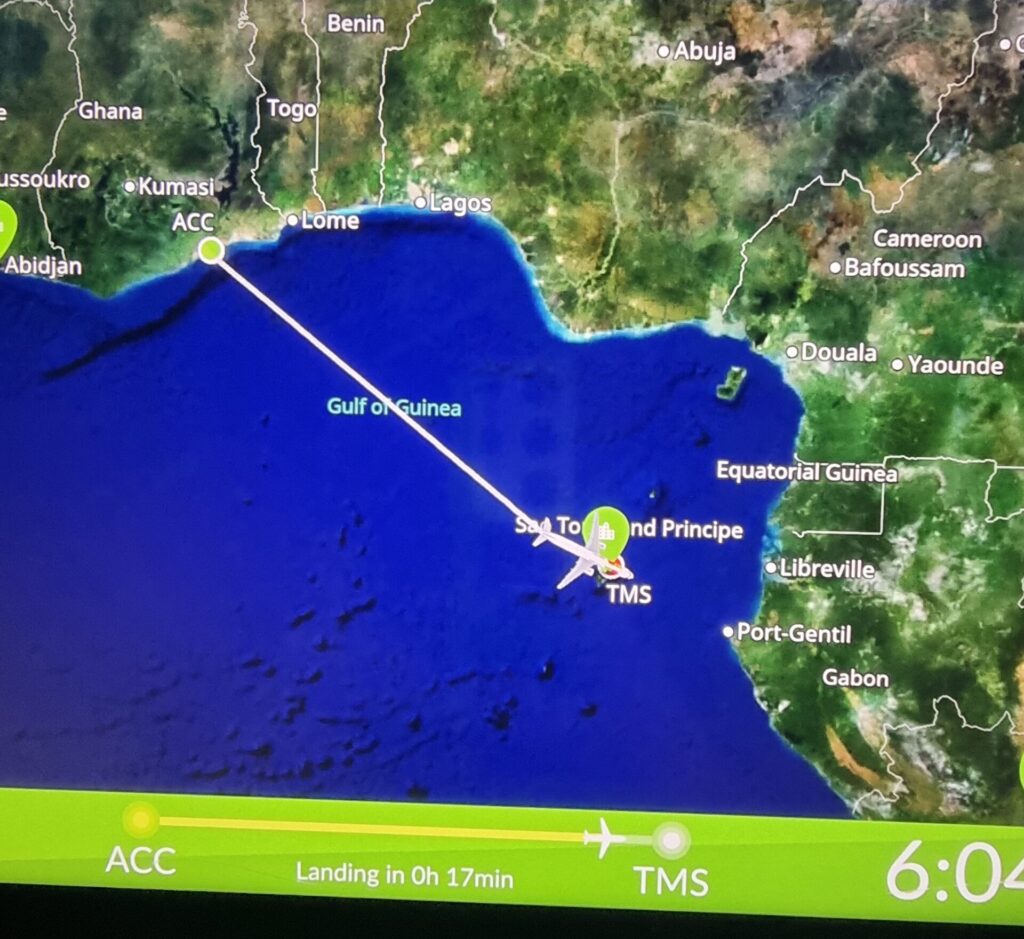
Don’t worry if you’ve never heard of this country. Merely 35,000 tourists per year make their way to São Tomé & Príncipe. The Portuguese are by far the biggest group among the tourists. And since only 1-2 flights land in São Tomé every day, the airport is about as small as you’d expect. Immigration was relatively fast and I left the terminal only a few minutes after I got out of the aircraft.
The airport in São Tomé is about ten minutes away from the capital of the country with the same name. Normally, a cab ride from the airport is supposed to cost €10. However, my cab driver told me some story that a bridge has collapsed near the airport and you have to drive a twenty-minute detour as a result. For this reason, I had to pay €15. I later found out that this absurd-sounding story, which you could probably hear from a cab driver at any other airport, was actually true.
Anyway, I was in my 146th country! And to be honest, I was in a country I had been looking forward to for a long time. While São Tomé & Príncipe sees almost no tourists, those who have been there before have generally been enthusiastic about it. And since the pictures that I have seen from time to time of this country looked very beautiful, my expectations were as a result quite high.
Over the next two days I visited the highlights of São Tomé Island. Basically, there are three classic routes on the island: the north and west coast, the center and the south. Some even divide the south into two parts: the south and the extreme south. The latter would include one more islet plus the two most famous beaches on the island. More about that later.
I chose the north and west coast plus the south of São Tomé Island, and these are the highlights that you can see on these two routes:
Pico Cão Grande
The most recognizable landmark of São Tomé & Príncipe is definitely Pico Cão Grande. It is a needle-shaped volcanic plug peak, and contrary to popular belief, it’s not the highest peak in the country, as its height is only 663 meters. The name means Great Dog peak by the way.
It is also possible to climb up to this peak (it takes two days with an overnight stay at the top), but most visitors prefer to see this specially-shaped hill from a viewpoint. You can find a few of these on the island. The most famous one is on the way from the city of São Tomé to Porto Alegre, in the south of the island.
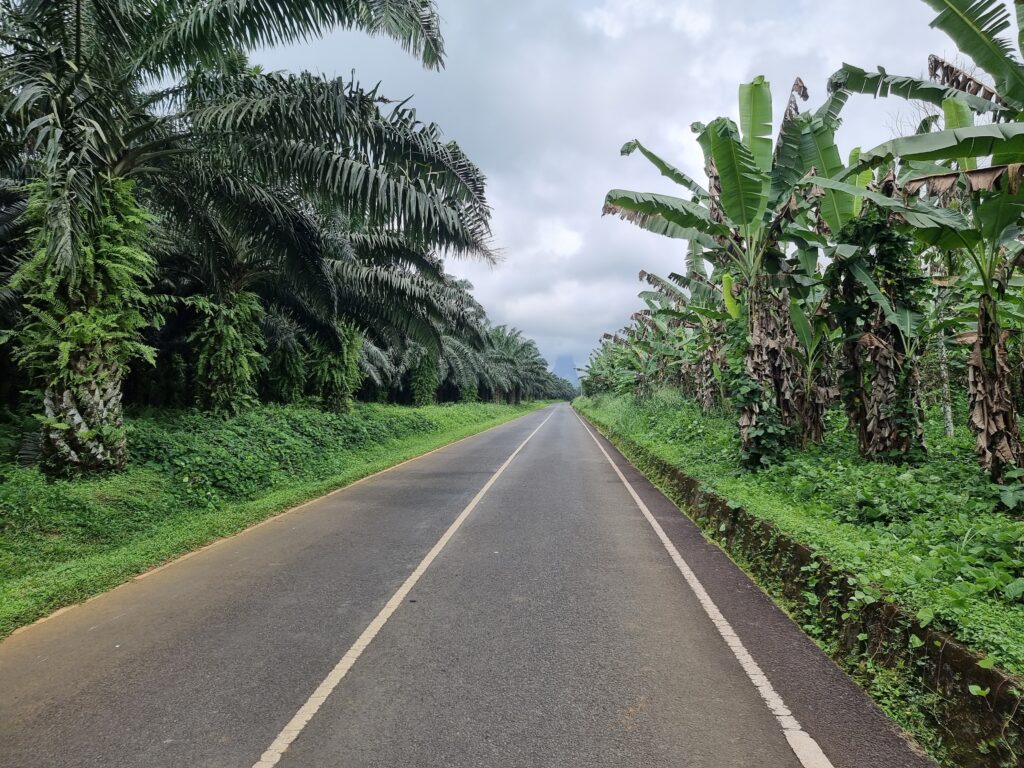
Although Pico Cão Grande is the most famous sight of São Tomé, it is not one that requires a lot of time. People are much more likely to spend a few minutes at the viewpoints, snap a few photos, and then move on. Little effort and maximum return.
Beaches
The beaches require more time. Or not. I visited the most important beaches of São Tomé Island but due to my short time in the country my visits were pretty quick. However, this does not mean that the beaches are not worthwhile. On the contrary, those who fancy a beach vacation will enjoy São Tomé. There are a lot of beautiful beaches around the island, so you are spoiled for choice.
The two most famous beaches of São Tomé are located at the southernmost tip of the island: Praia Piscina and Praia Jalé. From Porto Alegre it takes about thirty minutes on a rather bad road to Praia Piscina. To go from Piscina to Jalé takes maybe another five to ten minutes.
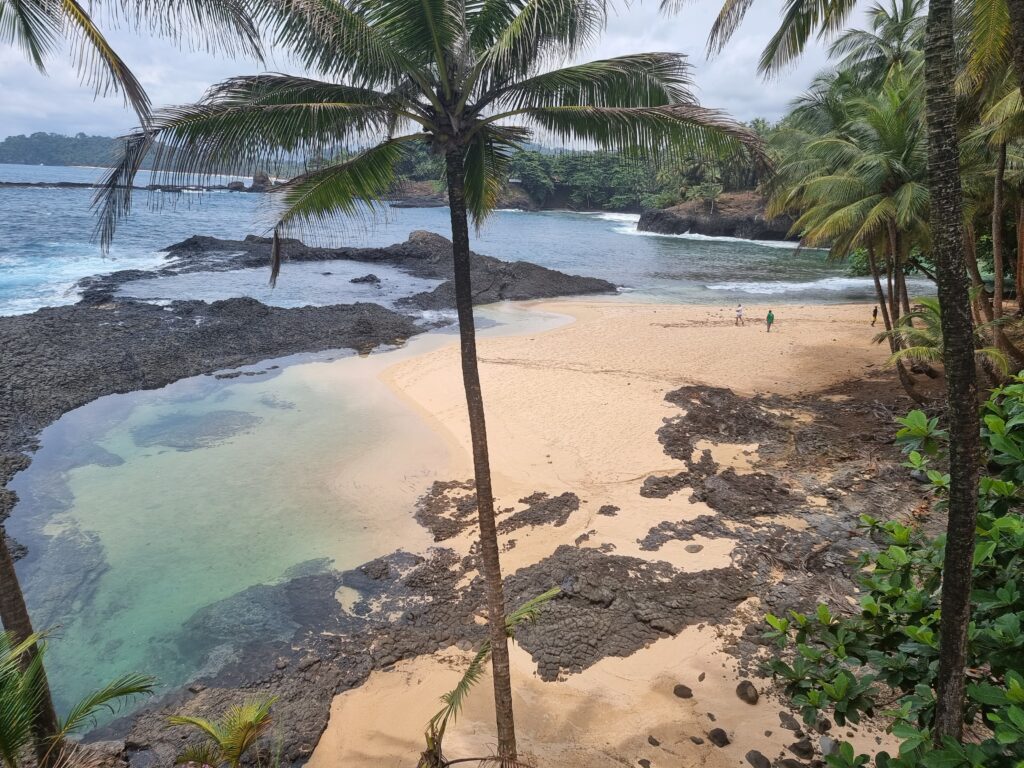
Both beaches are gorgeous, although you will find other beautiful beaches on the island as well. For those who don’t like to sit in the car for a long time, I would therefore say that it is not a deal-breaker to skip these two beaches. Alternatives would be for example Praia Micondo or Praia dos Tamarindos. Both are closer to São Tomé town.
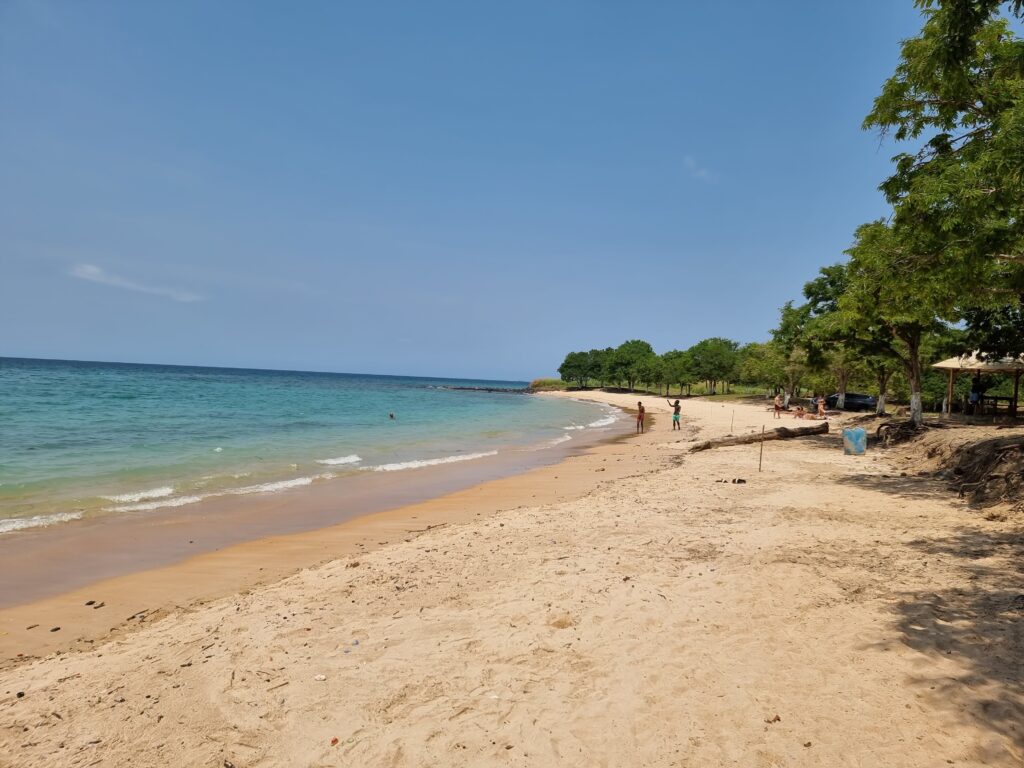
By the way, I liked the fact that there were almost no people on the beaches. They were either completely empty or I saw five to six people at most.
Roças
A legacy of the Portuguese colonial era are so-called roças. These roças are plantations that belonged to a Portuguese landlord and produced sugar cane, coffee or cocoa. The largest plantations could employ several thousand people and were therefore almost small villages with their own church, hospital or even train tracks.
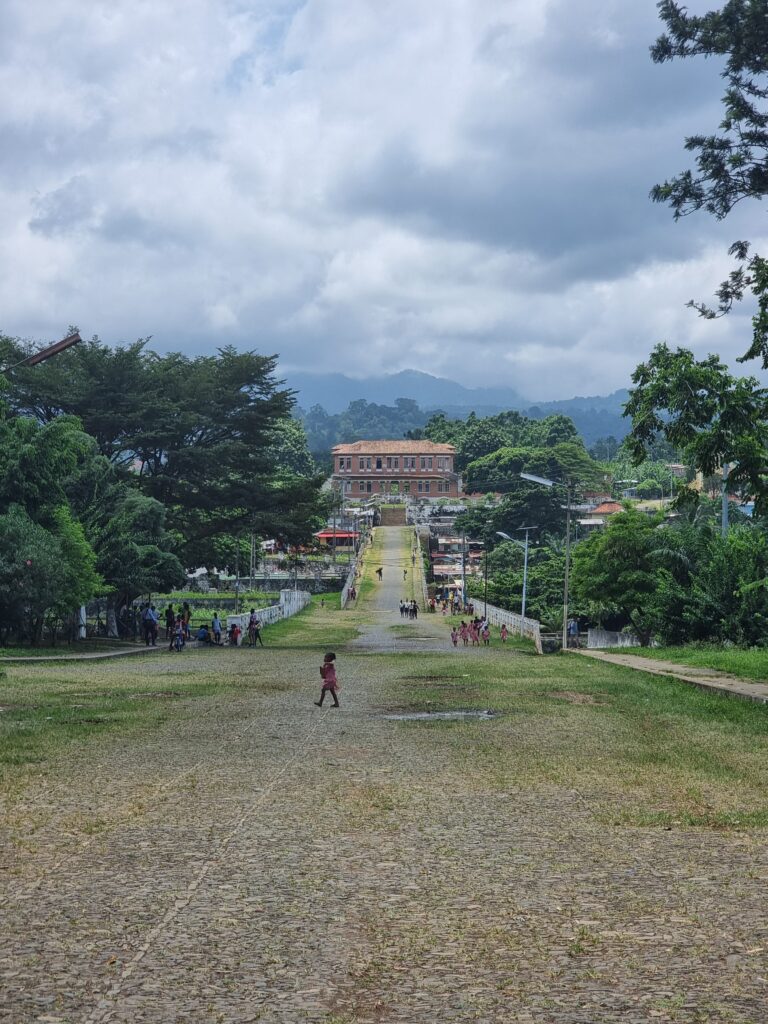
São Tomé & Príncipe has been independent since 1975, causing most of the Portuguese to leave the country. Since then, the roças are abandoned but still accessible for tourists. I visited Roça Bela Vista and Roça Agostinho Neto, both located in the north of the island.
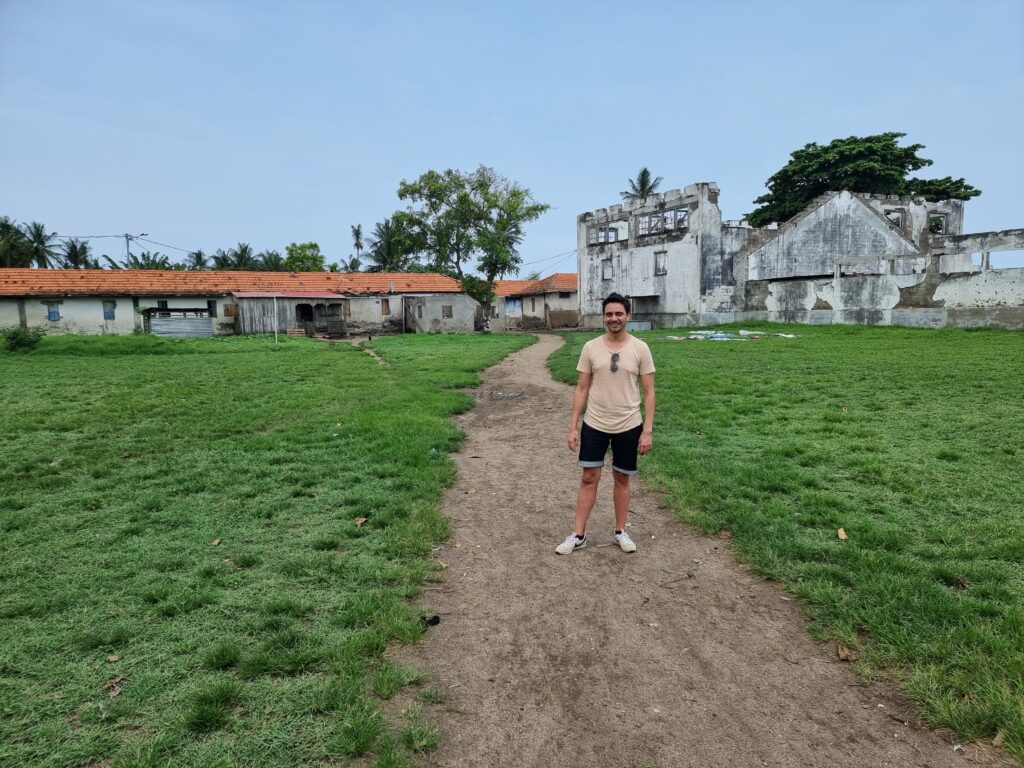
The roças are part of the cultural heritage of this country and there are 250 of them all over the island. I was told that 20 years ago the roças were still almost as well maintained as when they were in operation. Nowadays, the inhabitants seem to have other problems to take care of abandoned buildings. But even as crumbling buildings, the roças are worth seeing and a must when in São Tomé.
Flora and fauna
São Tomé & Príncipe is one of the most fertile countries I have ever been to. Everything on this island is lush green and occasionally the tropical plants have yellow, red or white flowers, creating a beautiful color combination. At the same time, you constantly see some fruits, vegetables or spices growing on the side of the road.
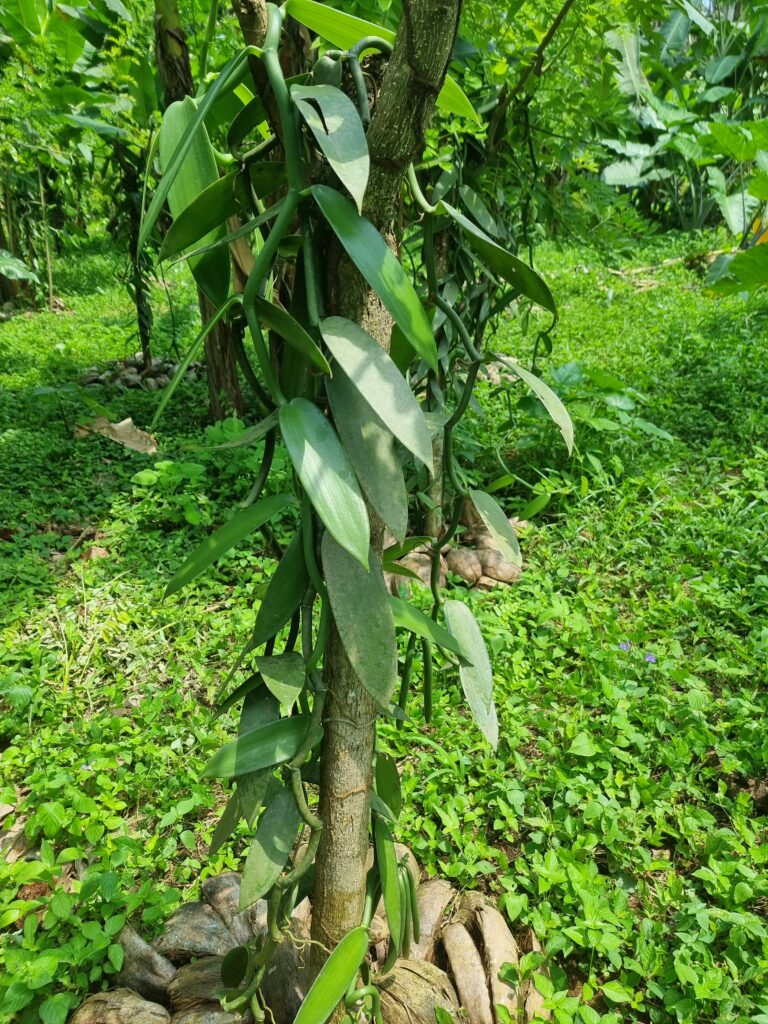
São Tomé & Príncipe used to be the largest cocoa producer in the world. In the meantime, this award goes to Côte d’Ivoire (almost half of the world’s cocoa is produced there), but the cultivation and export of cocoa is still important in São Tomé & Príncipe today. During my island tour, I saw cocoa trees several times and was able to taste the fruit too.
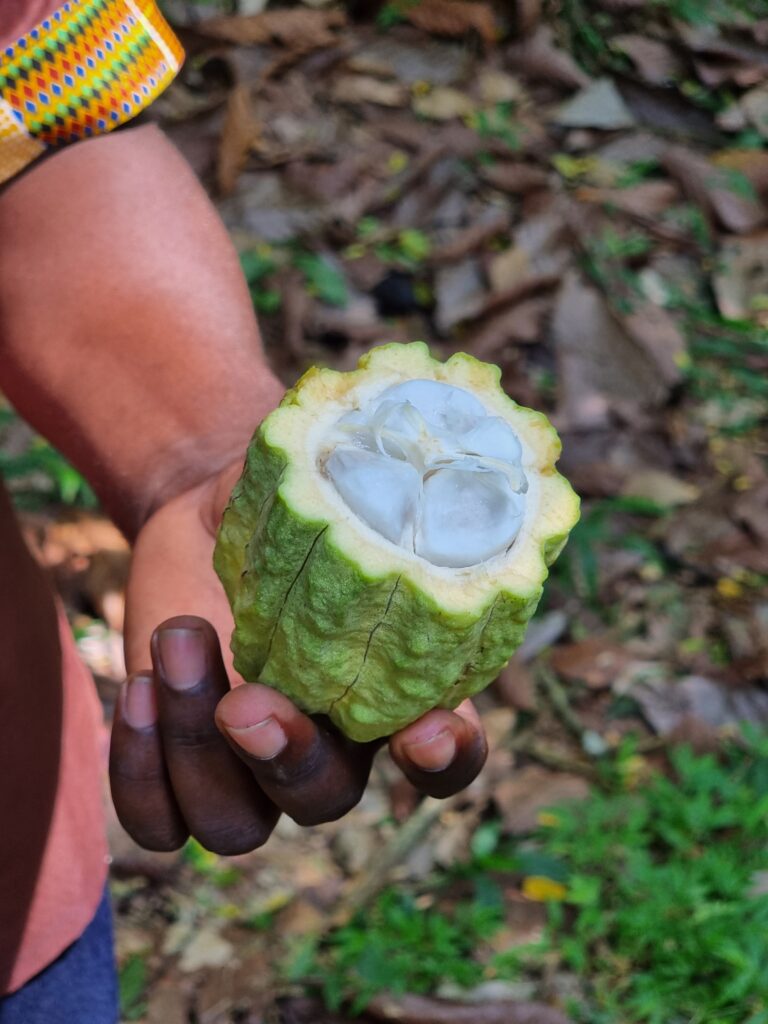
In addition, there are two local chocolate producers in São Tomé, Claudio Corallo and Diogo Vaz. Claudio Corallo offers a daily guided tasting tour at 16.00 in five languages. To make a reservation, you can contact +239 991 68 15. If you don’t have time, you can buy the chocolate in the supermarket (SUPER CKDO) in São Tomé. As a Swiss, I am often a bit underwhelmed when I buy chocolate abroad. However, the chocolate from these two producers was easily a 10/10. With €8 for 100g, however, it is also a premium chocolate.
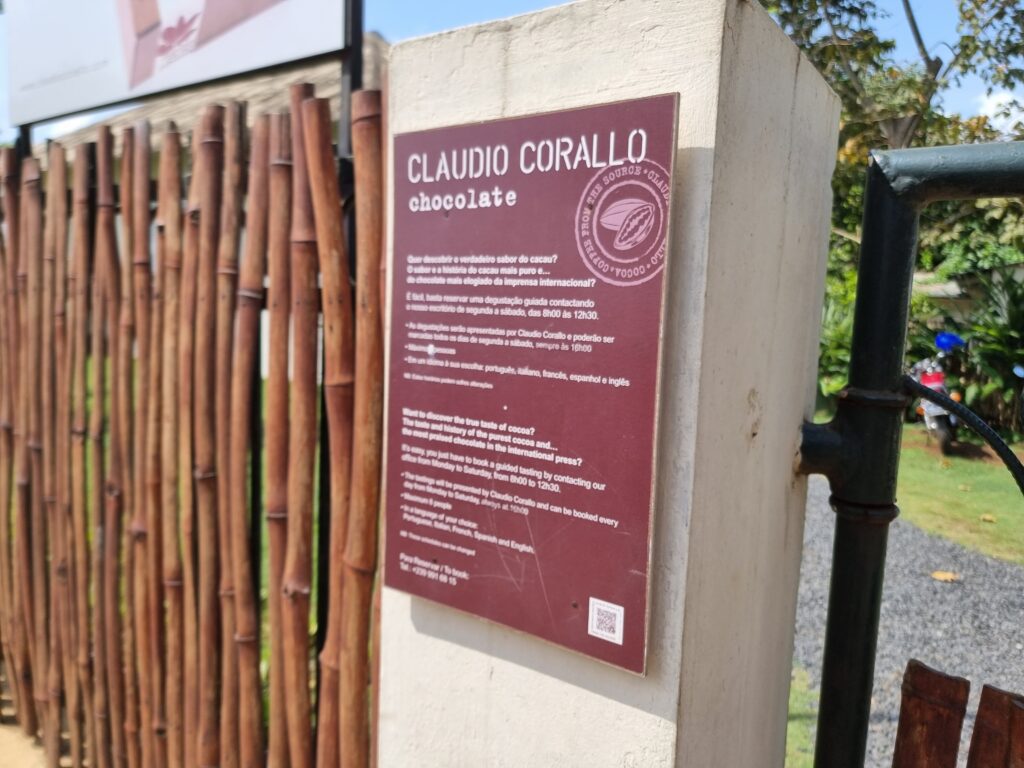
Back to the flora and fauna. The animals are also one of the highlights of São Tomé, but maybe not as you think. When driving around the island, it’s rarely more than ten minutes before you see pigs, dogs, chickens, goats and other animals running around on the side of the road. Somehow the whole thing seems like paradise: people and animals live together happily peacefully on this green island, there is hardly any crime and everyone looks out for each other.
There are a lot of places in São Tomé that are stunning because of the plants and trees along the road. Unfortunately, I can’t give you the exact location of these places. It were just random stopps on our way from one place to the other. A nice place for a photo was a road on the west coast of the island, about fifteen minutes before the Santa Catarina Tunnel.
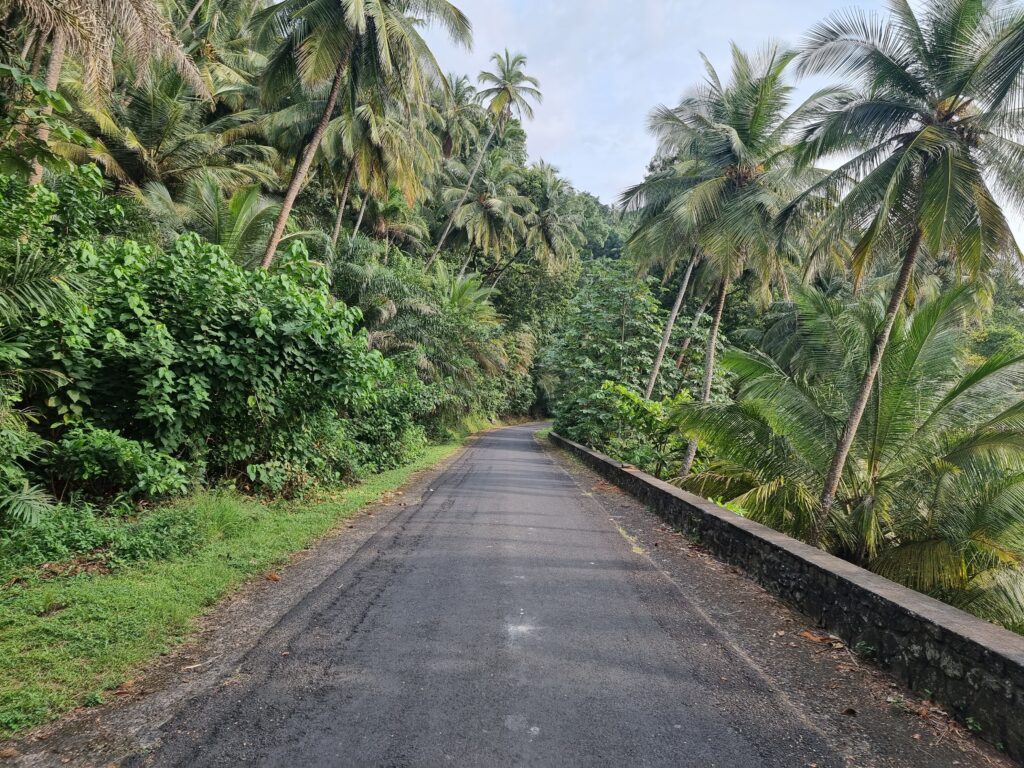
Other attractions
First I should mention waterfalls here, because there are some spectacular ones in the country. The reason why I summarize them here under “other attractions” is that I saw only one waterfall. And that one was not very impressive. The most famous waterfall in the country is the Cascata de São Nicolau. The biggest and probably most adventurous is the Cascata Angolares, where you first have to walk through several narrow tunnels to get there.
Speaking of tunnels, another sight is the already mentioned Santa Catarina Tunnel in the west of the island. Why this tunnel is a landmark, I do not know exactly. In the end, it is simply a tunnel about twenty meters long on the coast of the country. Nevertheless, it makes a good photo subject.
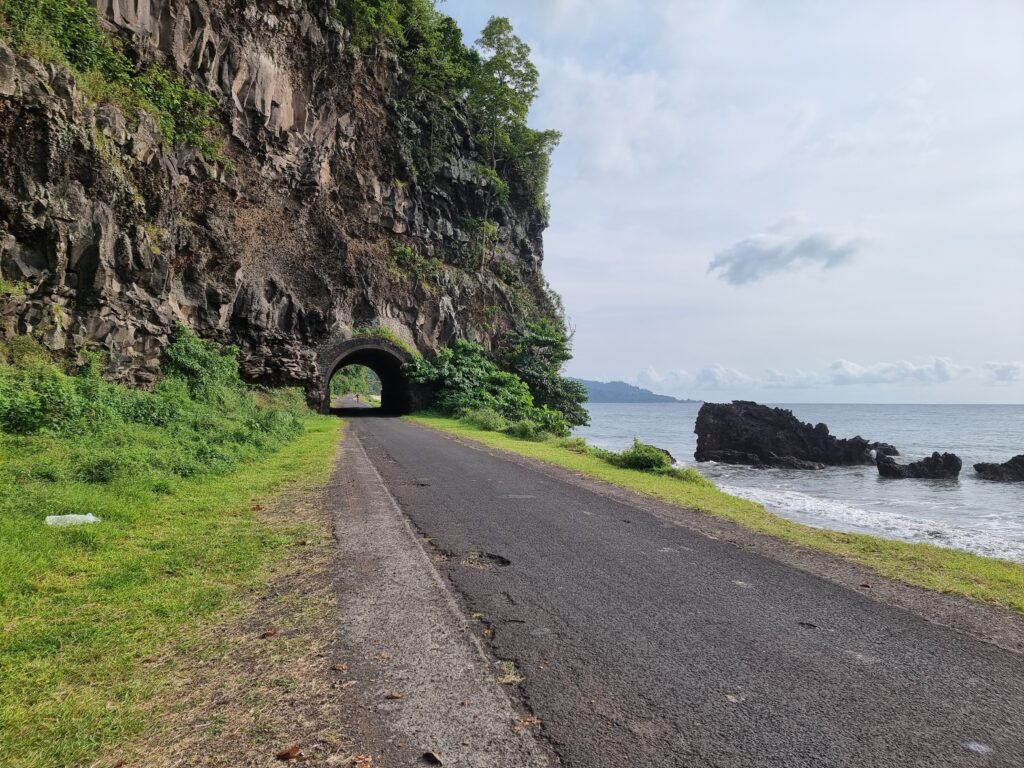
Furthermore, there are some monuments on São Tomé, such as the monument dedicated to the Batepá Massacre. Or the much more interesting monument with the equator line, which is located on Ilhéu das Rolas, an islet south of São Tomé. Unfortunately, I did not have time to visit this islet, but it can be reached by boat and it takes about twenty minutes.
Other highlights related to the ocean would be the blue lagoon and the boca do inferno. The blue lagoon is an alternative to the beaches. We saw it only in passing from above, from where it looked very pretty. The boca do inferno is a rock formation on the coast that forms a passage through which water flows and then shoots into the air like a fountain. So a bit similar to the blow holes you see in other countries.
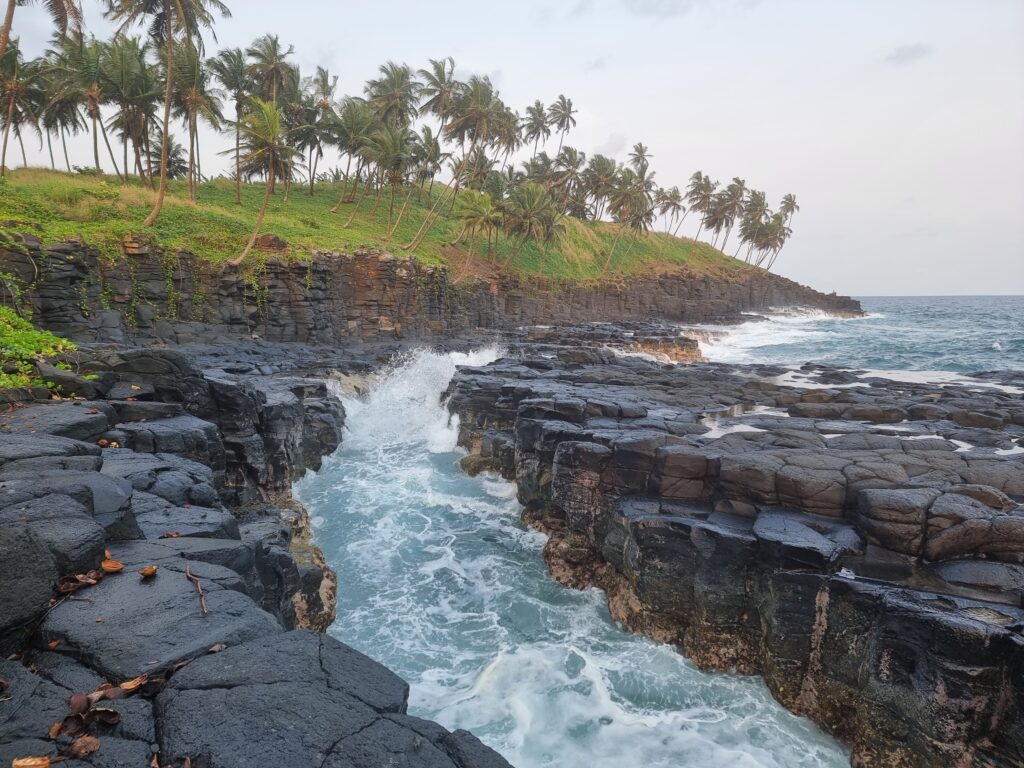
Practical tips for São Tomé
São Tomé & Príncipe is not a country with a tourist infrastructure like Mauritius or Cabo Verde. However, there are some tour guides who will show you around the island if you don’t want to do it yourself. I hired Luís Miguel during my stay (Whatsapp +239 995 4001) who drove me around the island and showed me the best places. Luís charges €90 per day and turned out to be a nice and knowledgeable guide.
On my second day I met fellow traveler Matt Walker from the UK who joined my tour. Matt has written a book after watching a football game live in the stadium of each UEFA member in one season. Cool project I would say. You can find his book here. Matt traveled around the island by public transport/collectivos the next days, which is also an option. A cheap one, but of course it takes longer than with a private driver. Obviously, you can also rent a car or motorbike, which is probably the best option if you are confident to drive yourself. With a few exceptions, the condition of the roads did not look bad.
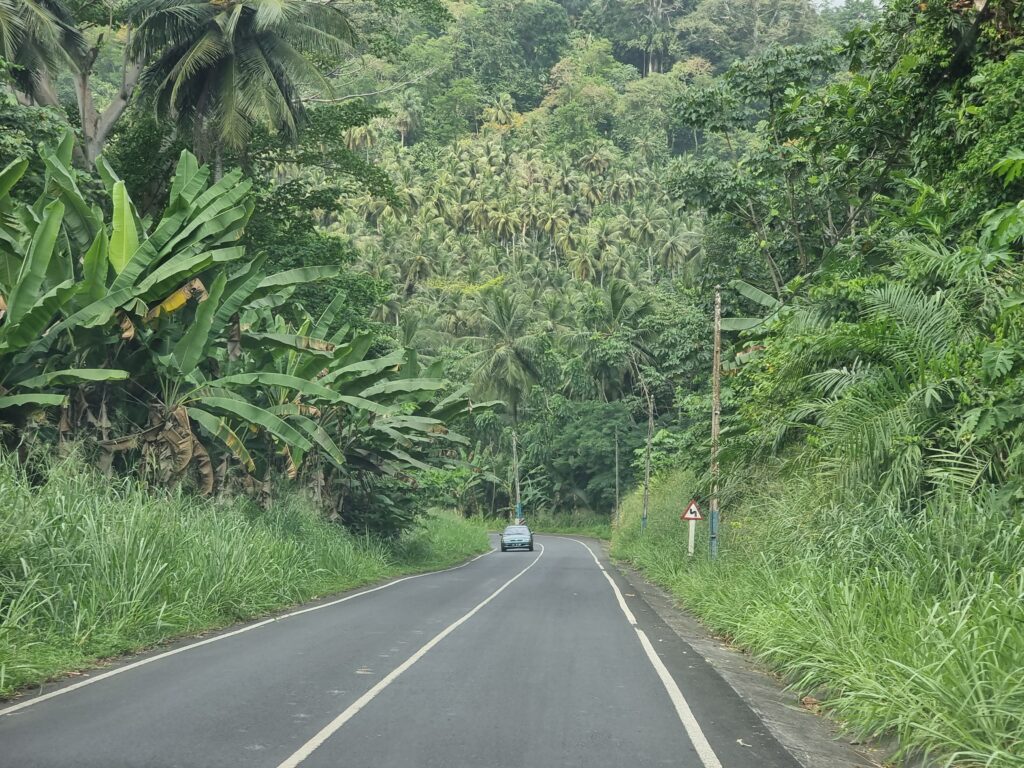
What’s also important to know is that until recently, there didn’t seem to be an ATM in the entire country. Even today, ATMs are rather sparse on the island and I wouldn’t count on them working. In my case, everything worked out with my Visa card. Mastercard is another story from what I heard. Anyway, it is better to bring some euros. Just in case.
The local currency in São Tomé & Príncipe is called Dobra and is pegged to the euro. While the official rate of an ATM will get you 24.50 Dobra for one euro, changing cash will even get you 25 euros. Not a huge difference, but still remarkable, since you usually make a loss when changing cash. You can also pay directly in euros if you want. By the way, I did not once pay with my credit card. Most places do not accept card payment anyway.
In general, I found São Tomé not particularly expensive but also not particularly cheap. In the good restaurants, which are also very much frequented by tourists, you pay European prices. Accommodation is available in all price ranges, from extremely cheap to high-end. My accommodation, Residencial Avenida Geovanni, was a simple guest house in the heart of São Tomé, which cost €67 for two nights. Transportation is affordable when you use collectivos and the taxi from/to the airport is €10.
One more thing about the food. My expectations were quite low, but I have often had excellent meals in São Tomé. I can recommend the restaurant Papa Figo in the capital. One of those restaurants with a lot of tourists, but the food was delicious. I found the probably most famous restaurant of the country, the São João dos Angolares, a bit disappointing. The eight-course meal you get there was average at most. Perhaps it was because I ordered without fish and seafood. Matt ate there a few days later and found the fish dishes to be highlights.
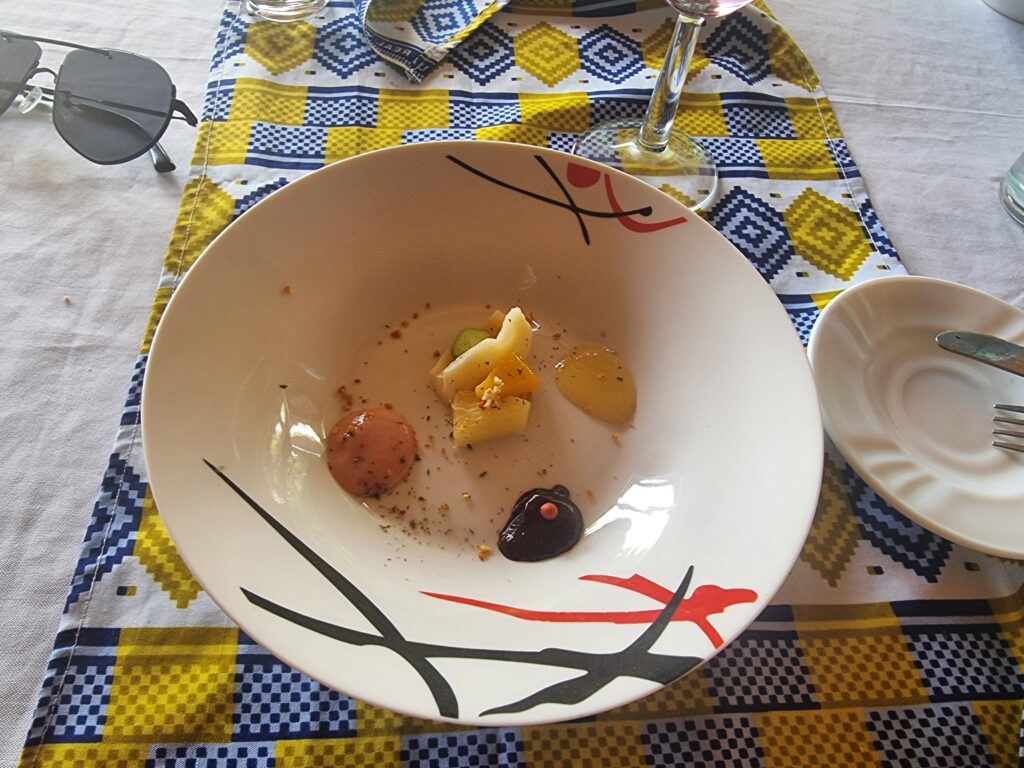
In general, there is a lot of fish and seafood in São Tomé & Príncipe, how else could it be on an island. Furthermore, you can find the typical Portuguese dishes (e.g. Bitoque, a steak with a fried egg on top) in most restaurants. Apart from that, there was also a lot of European food, pasta and so on.
By the way, English is hardly spoken in São Tomé & Príncipe. Funnily enough, there are some people who speak French. Otherwise, my Spanish proved useful when it came to ordering food or asking for directions. English comes fourth after these two languages and of course Portuguese. I guess that only those working in the tourism sector speak English. So if you don’t speak Portuguese, Spanish or French and you are exploring the country on your own, you will probably have regular challenges with the language barrier.
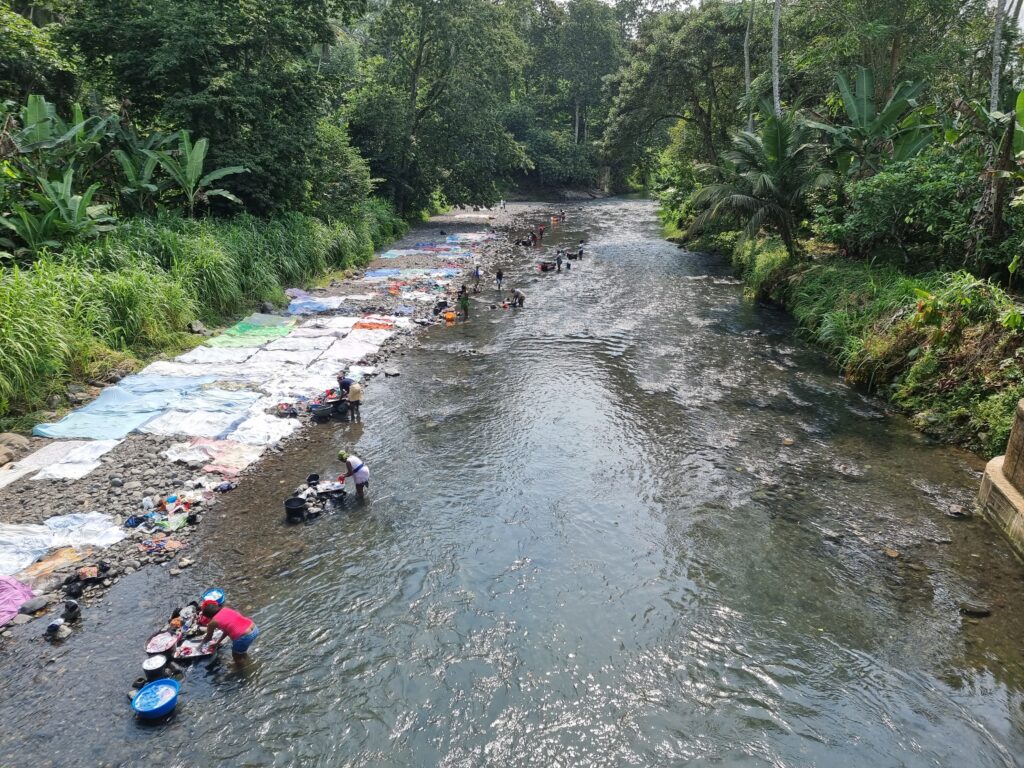
São Tomé & Príncipe is besides one of the safest countries in Africa. Some even call it the safest. The crime rate is very low and I have walked around alone at night without feeling uncomfortable. Use common sense and you should have no problems.
My conclusion about STP
I believe that anyone who has read this far will not be curious about the conclusion, because this should probably already have become obvious during the reading.
My expectations for São Tomé & Príncipe were high and they were even exceeded. STP is a really cool country that offers a lot and at the same time has few tourists. A great combination. Besides, the island is beautiful, a lush green one with tropical plants, fruits and vegetables growing at the road side and beautiful beaches. For a very small country, São Tomé & Príncipe also has a fairly high density of places worth seeing.
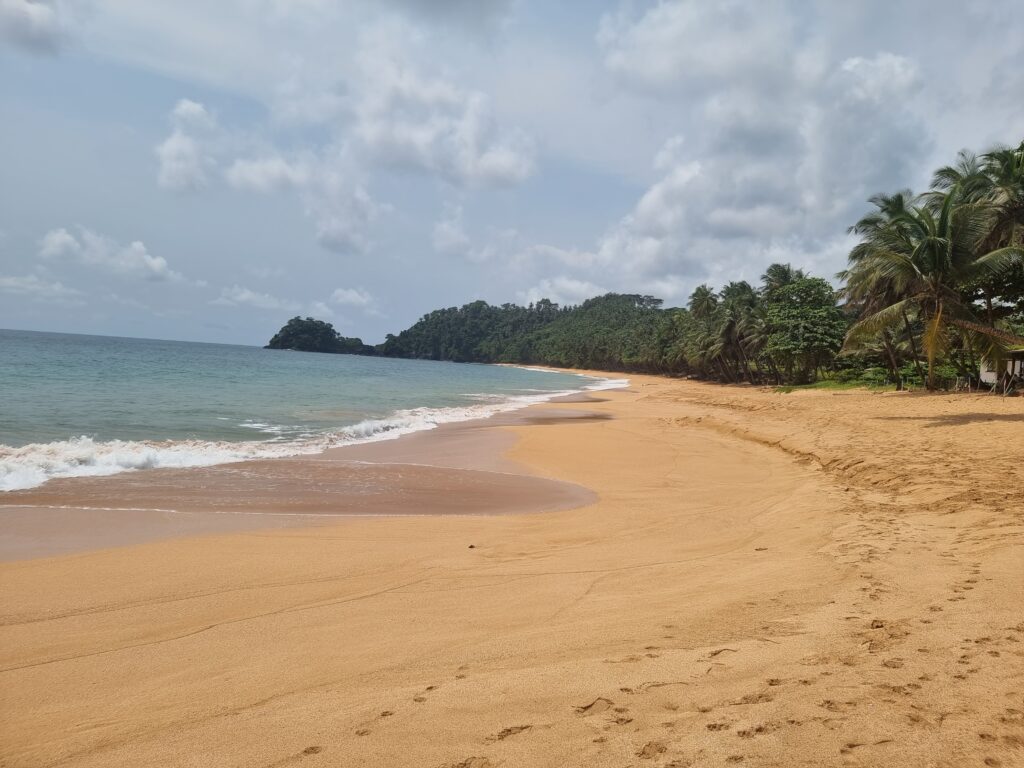
So, how many days do you need for São Tomé & Príncipe? For me, there were always two options: either I fly there directly from Lisbon and spend maybe four or five days in STP. Or I combine Sáo Tomé & Príncipe with Ghana, since some of the TAP-flights from Europe make a stop in Ghana.
In the end, I decided on the second option. The only question was how I would split my days between Ghana and São Tomé & Príncipe. I had to decide between four days in Ghana and two days in São Tomé or three days in both countries. The choice fell on the first option. In retrospect, that was a mistake. Two days were very short for São Tomé, despite the size of the country. Besides, I did not enjoy Ghana that much (click here to read the trip report). So I would not have minded spending one less day there.
Nevertheless, I would say that you need at least three days to really see all the highlights of São Tomé Island. Add two more days for Príncipe (the round-trip costs about €170) and one or two extra beach days and you have a full week. Seriously, I could have imagined staying a week in this country.
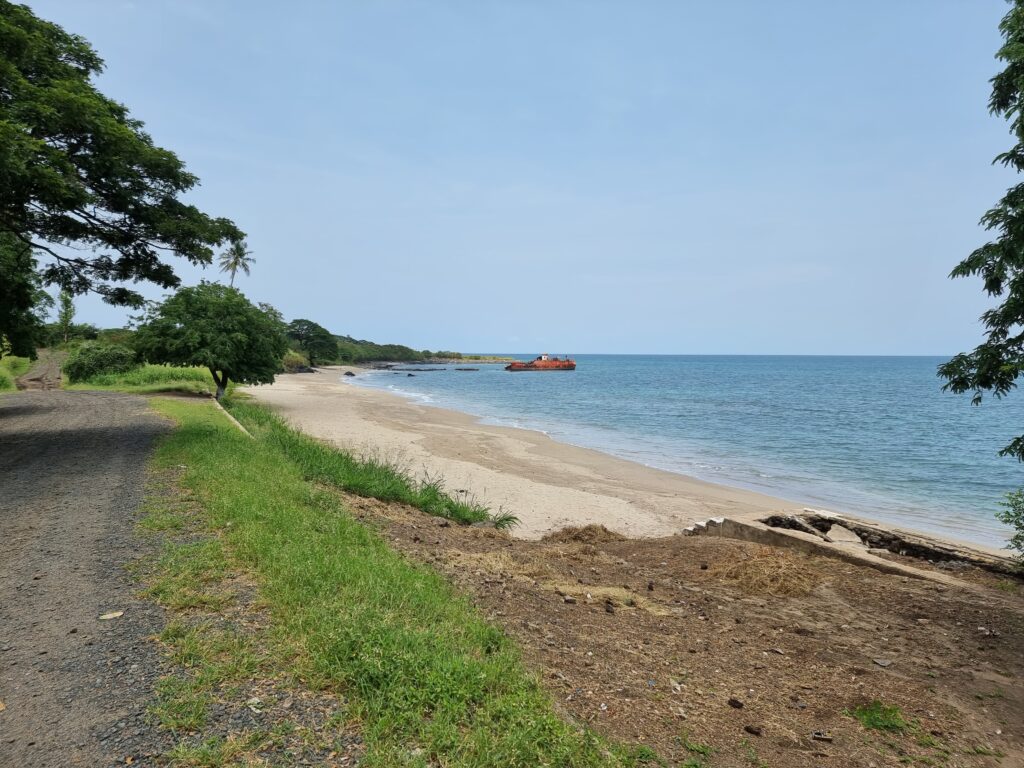
For me, São Tomé & Príncipe was the third of six African island countries. In comparison with Comoros, STP is the clear winner for me. With Cabo Verde, another lusophone country, it is more difficult and I cannot decide on a clear winner. The advantage of Cabo Verde is that it is perhaps more diverse than São Tomé & Príncipe. STP is definitely less touristy.
But also in comparison with other small island countries, for example in the Caribbean or in the South Pacific, I would rank São Tomé on one of the top places. Maybe STP doesn’t have quite the world-class beaches as other islands, but it offers more variety and is also in a much more affordable price range.
I am pretty sure that sooner or later I will return to São Tomé. Then I will follow my recommendation and spend a week in the country, which will do it more justice than just two days. If you are interested in visiting this country, right now is an excellent time to go. Who knows how long STP will remain an insider tip.
And for more inspiration, I’ll end this article by referencing to the gallery below….
Click here to find the trip reports of the 180+ other countries I have visited so far!
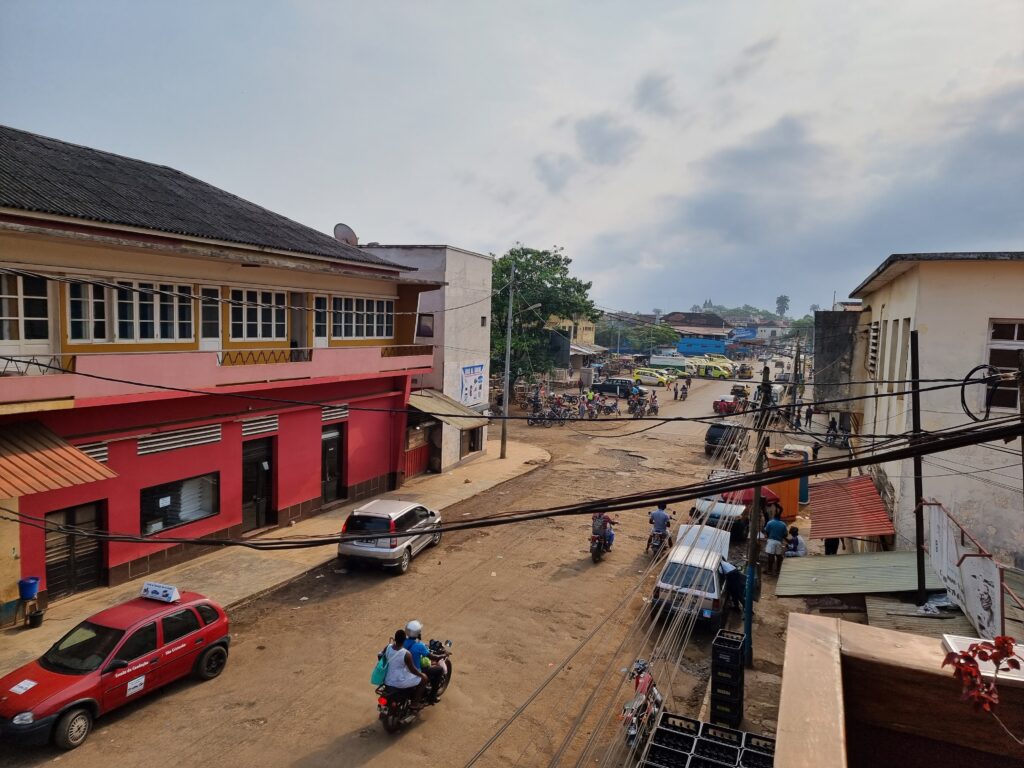
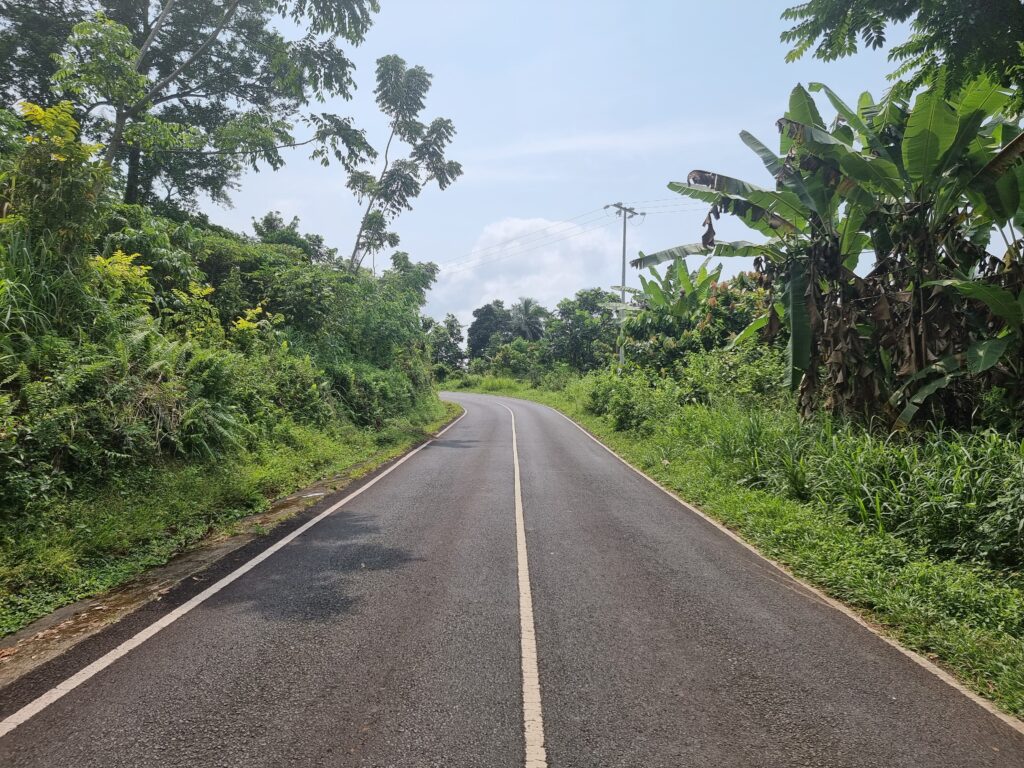
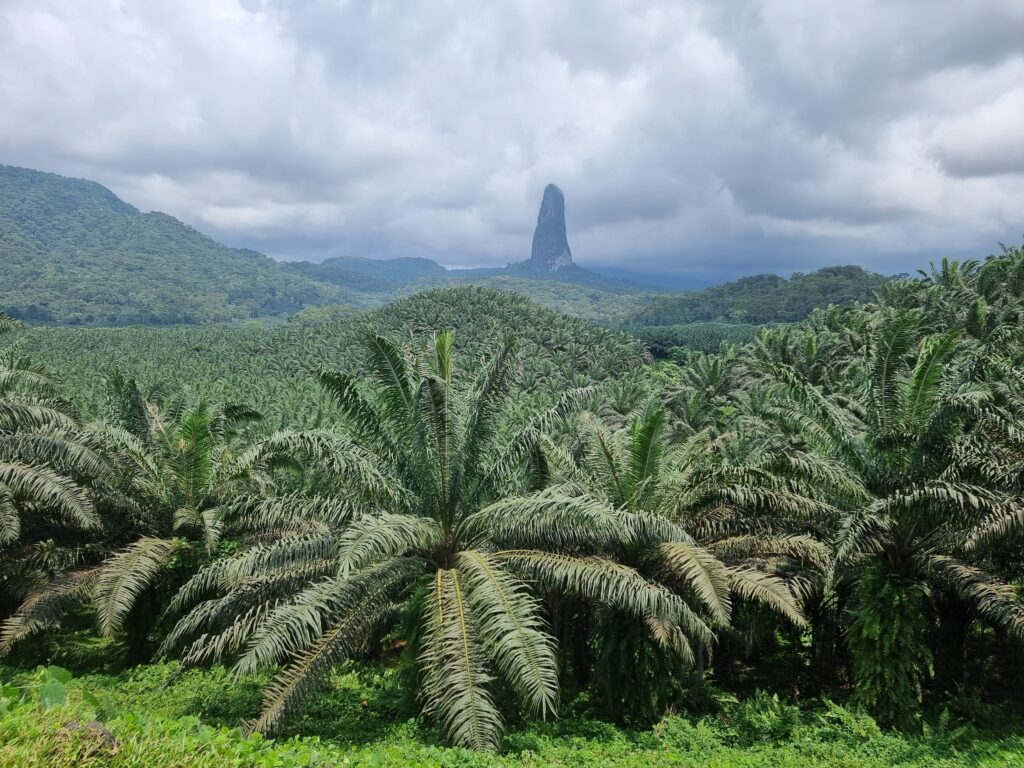
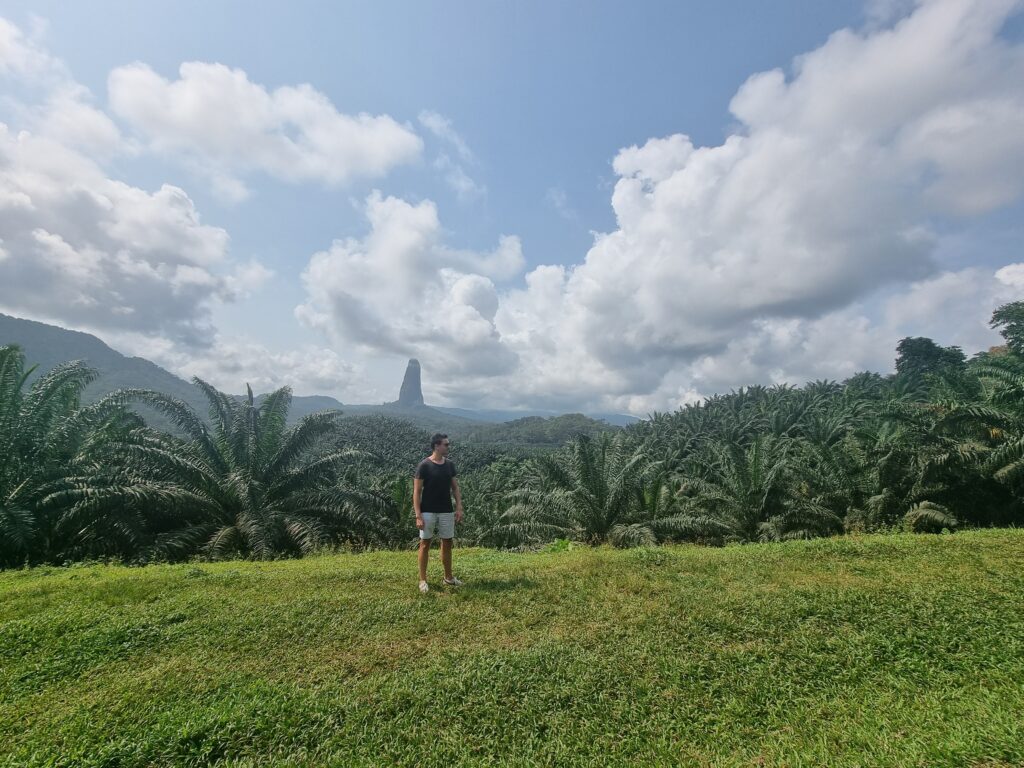
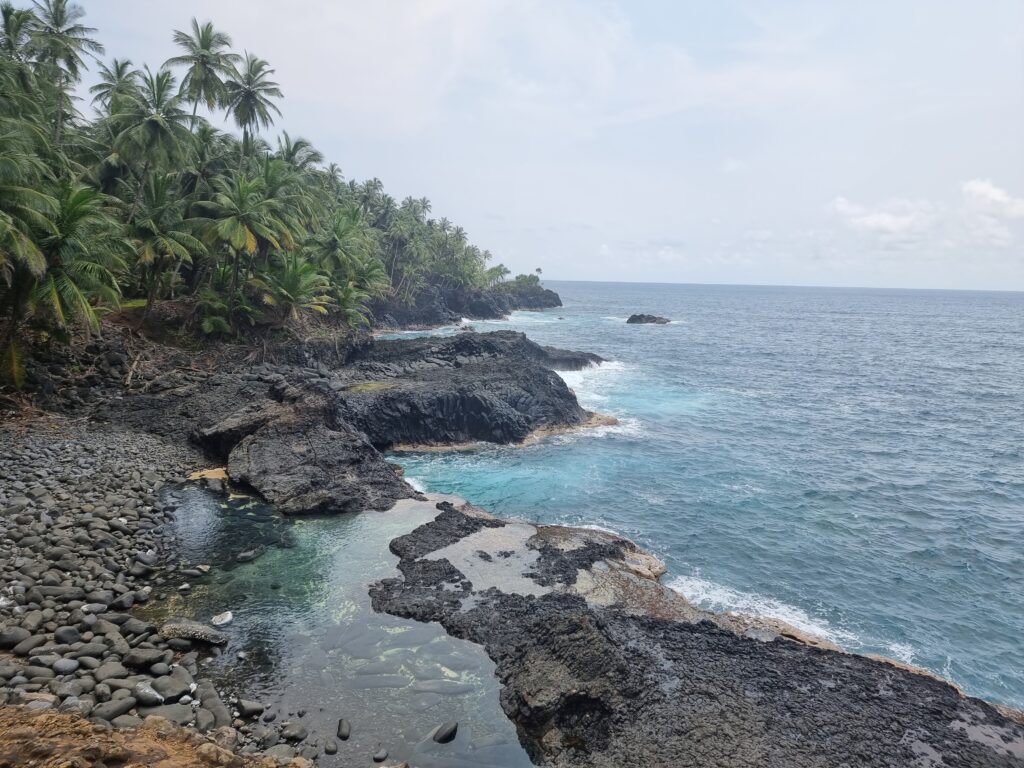
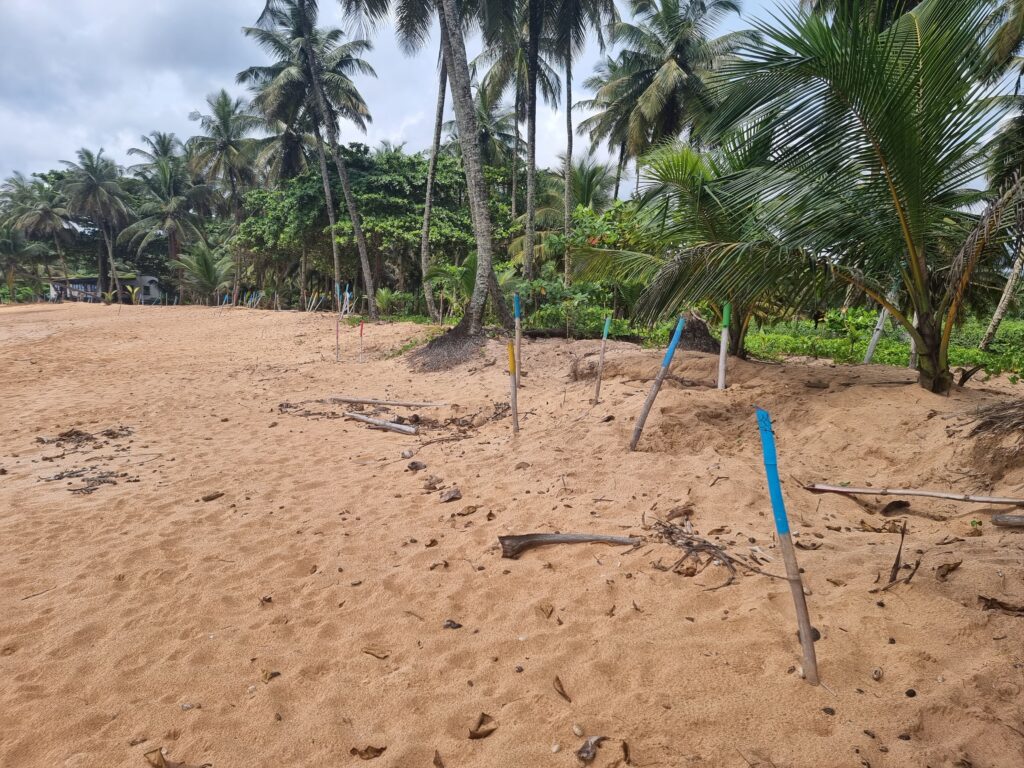
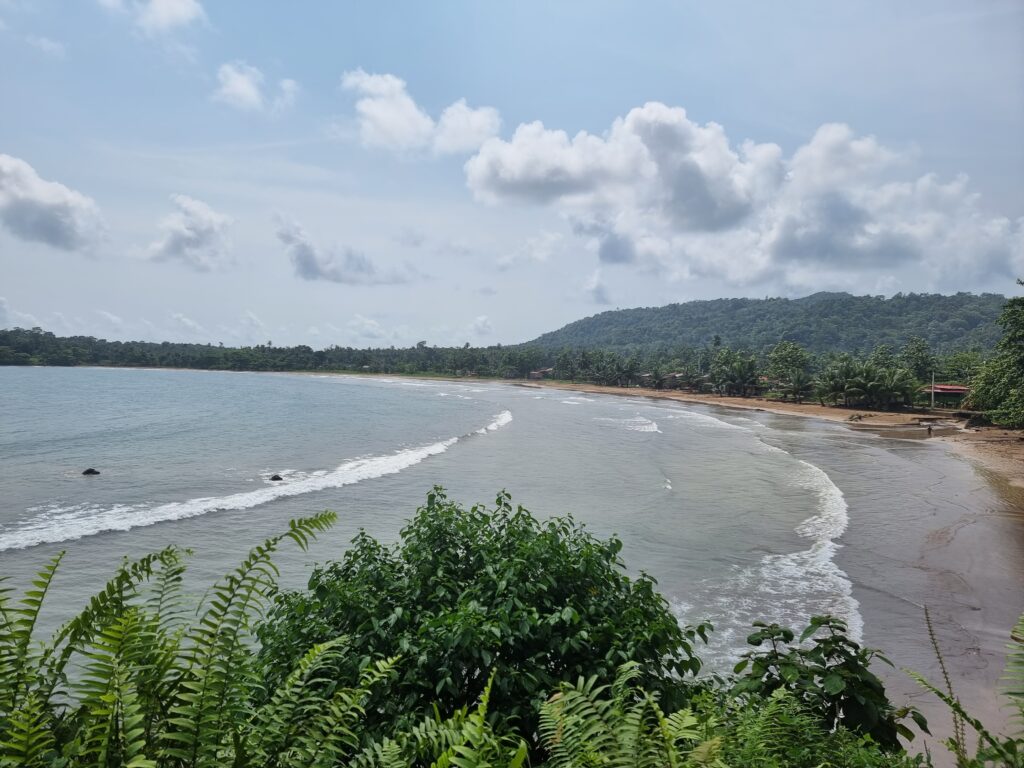
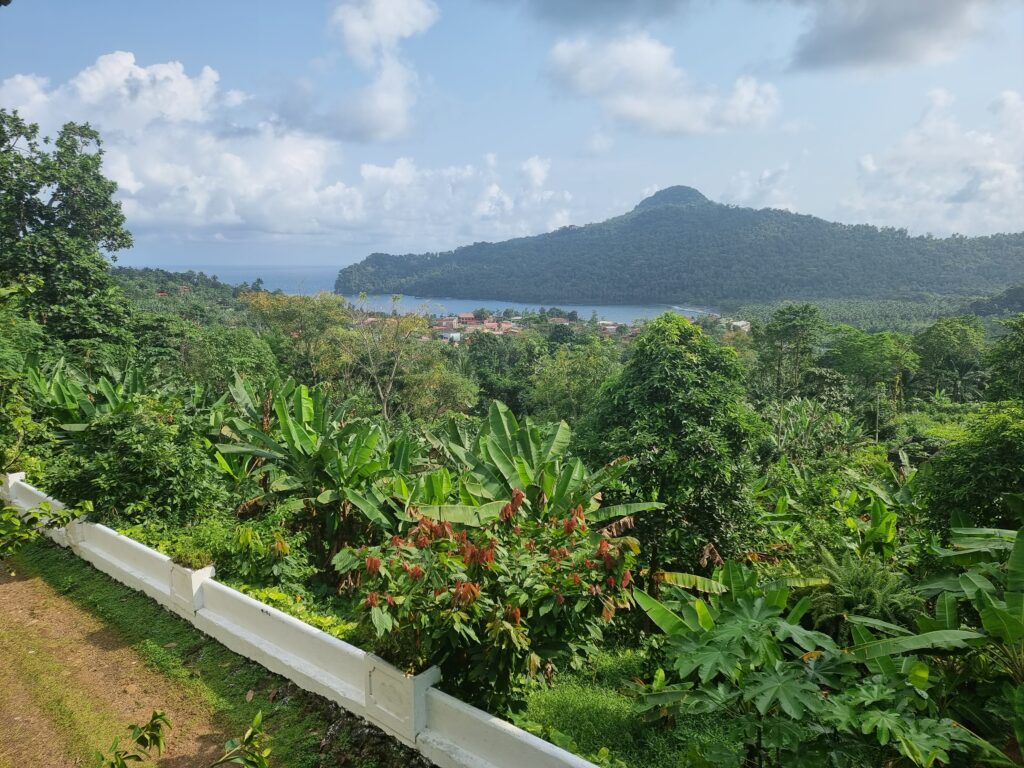
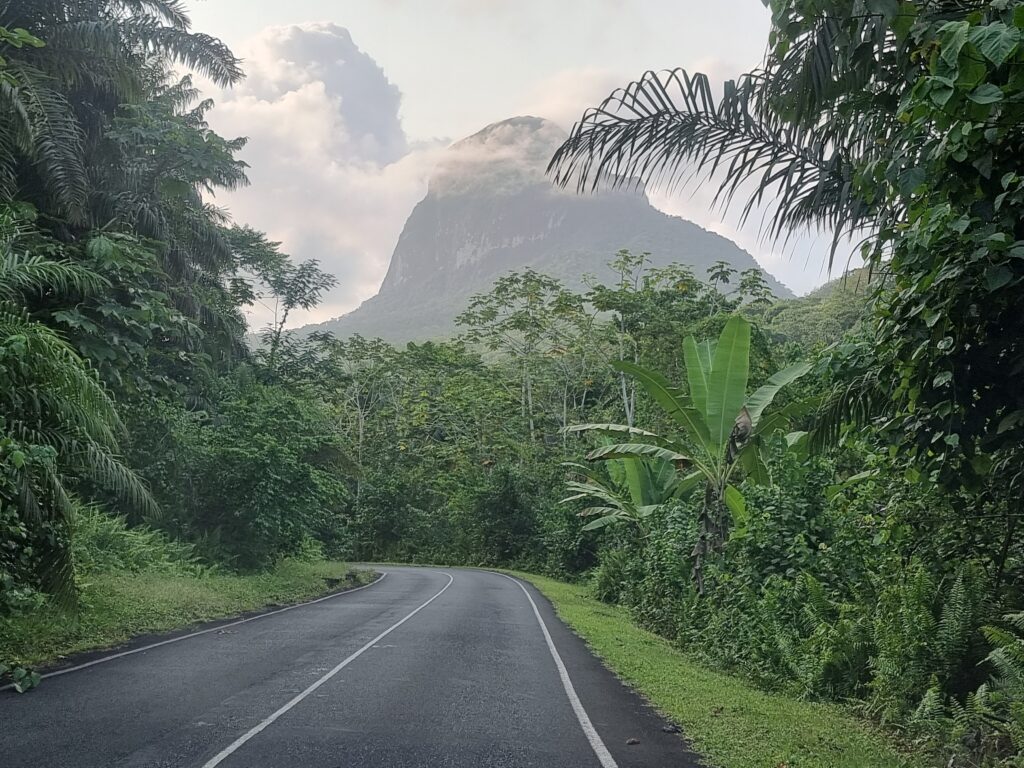
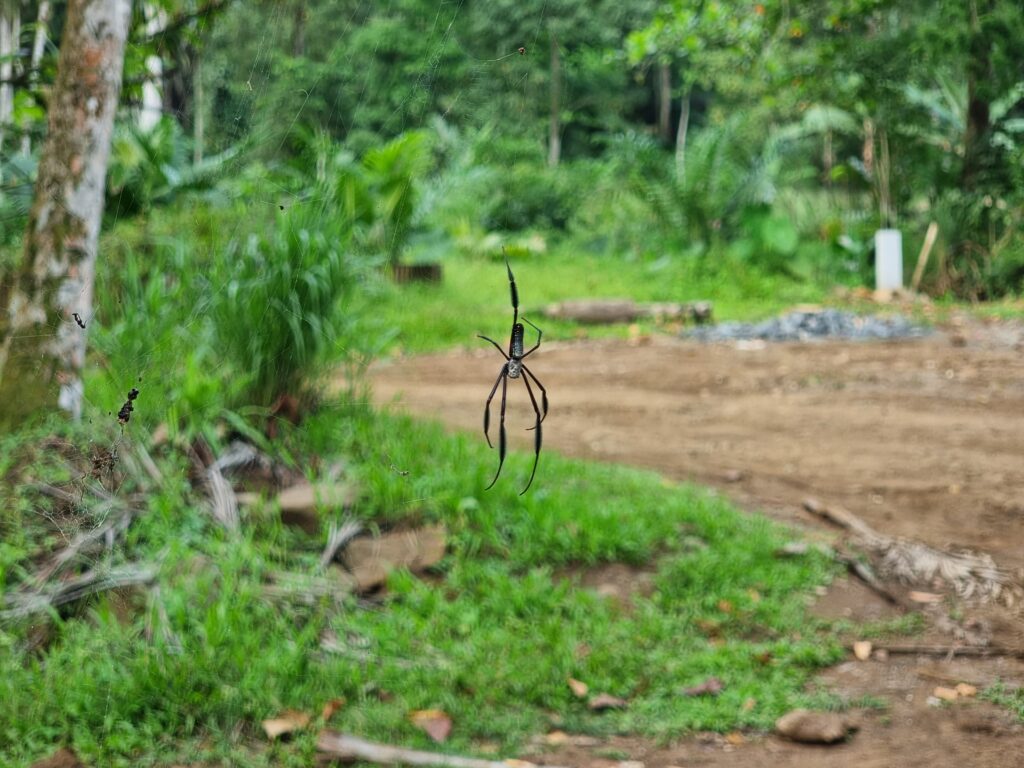
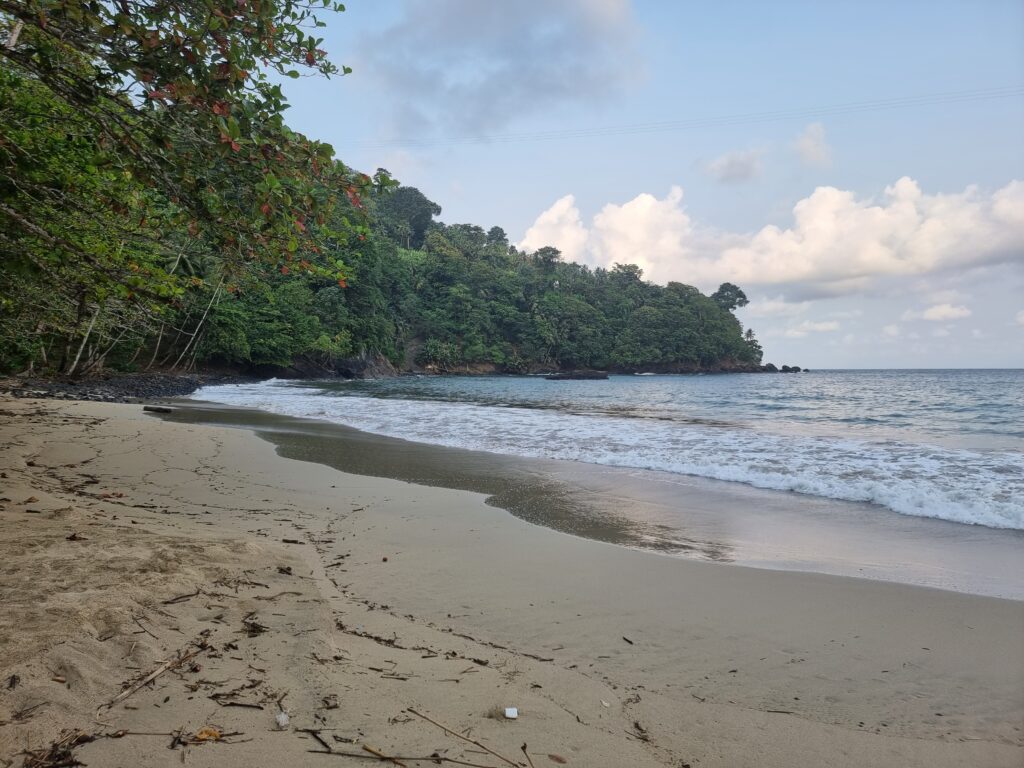
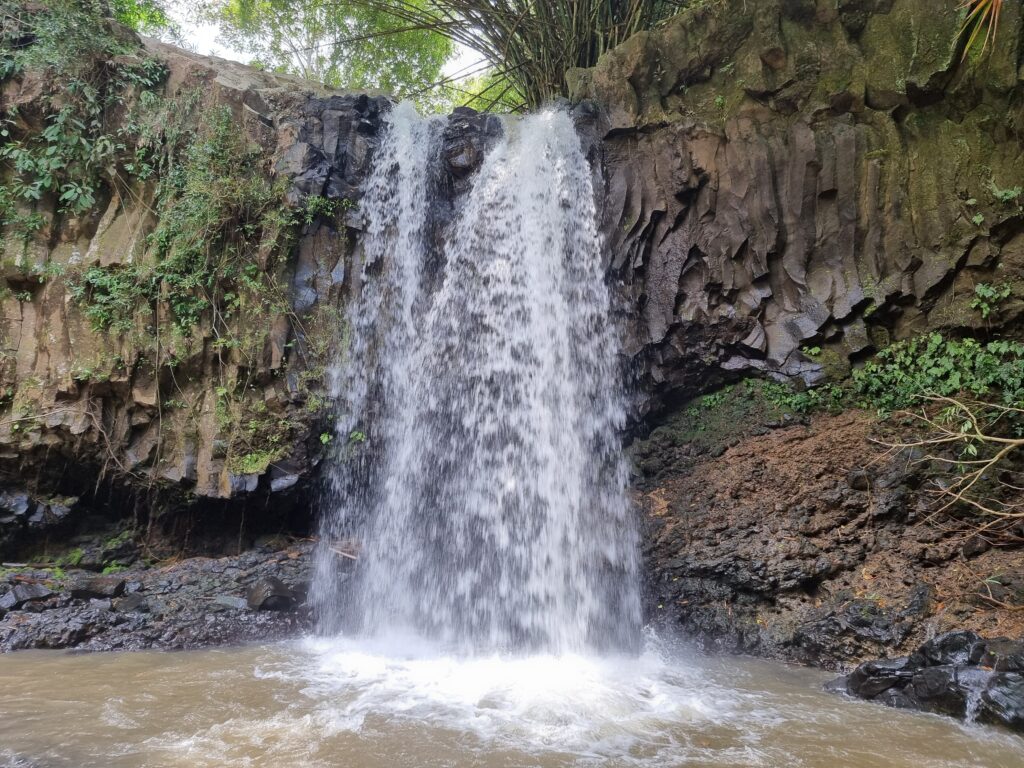
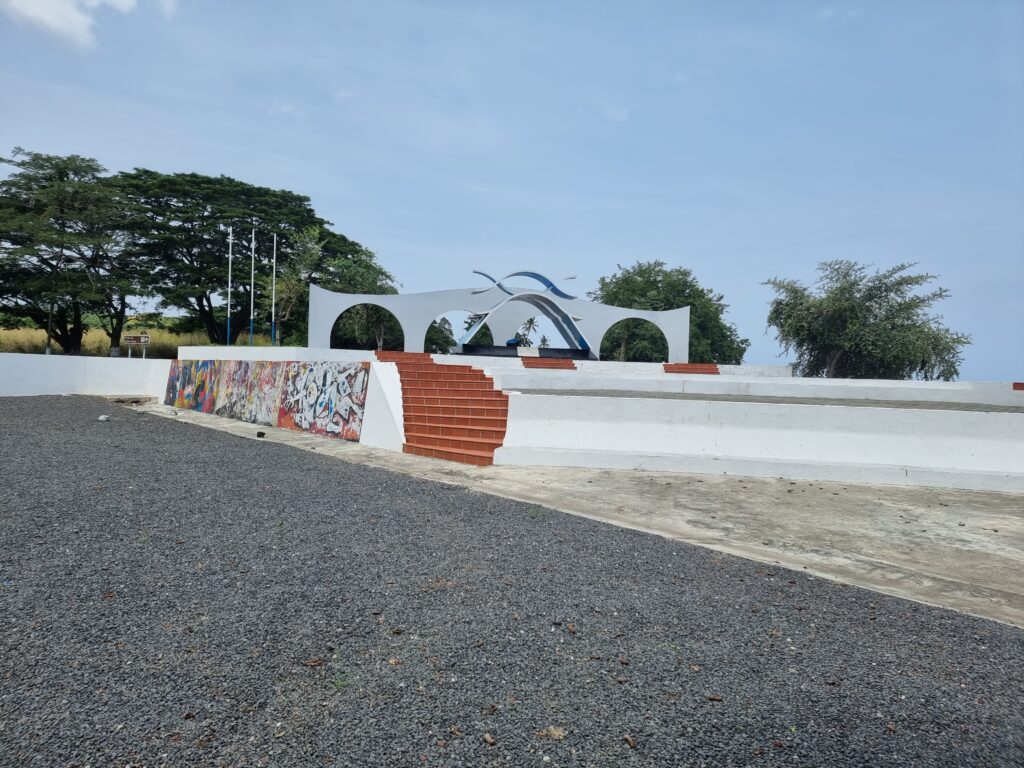
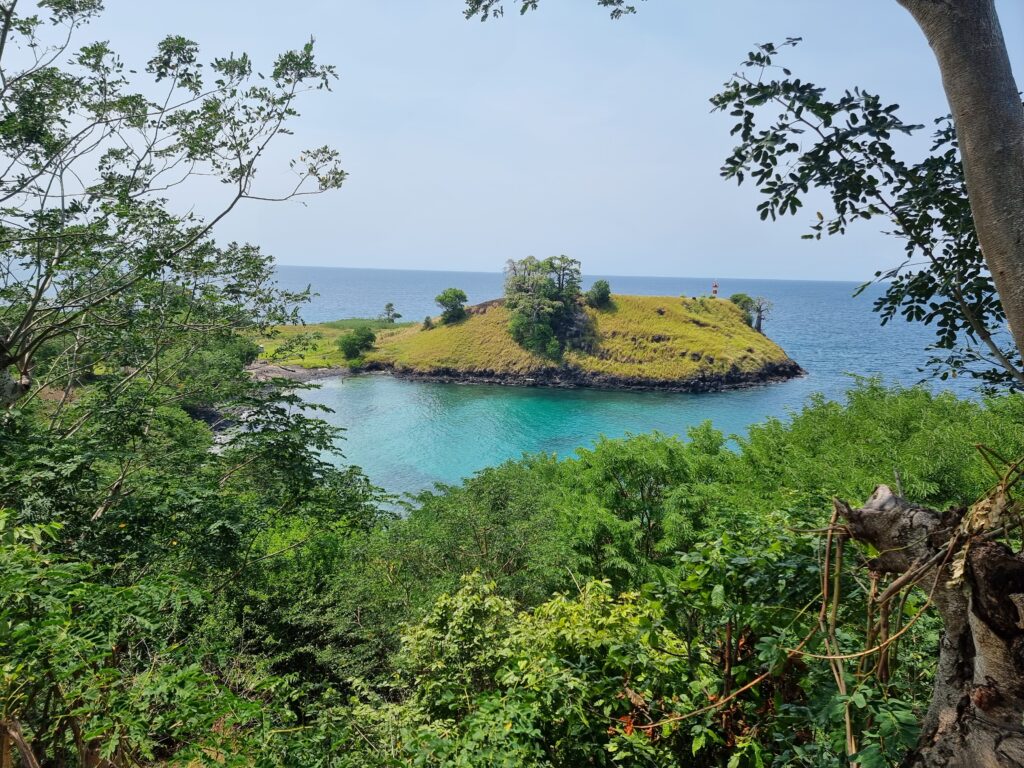
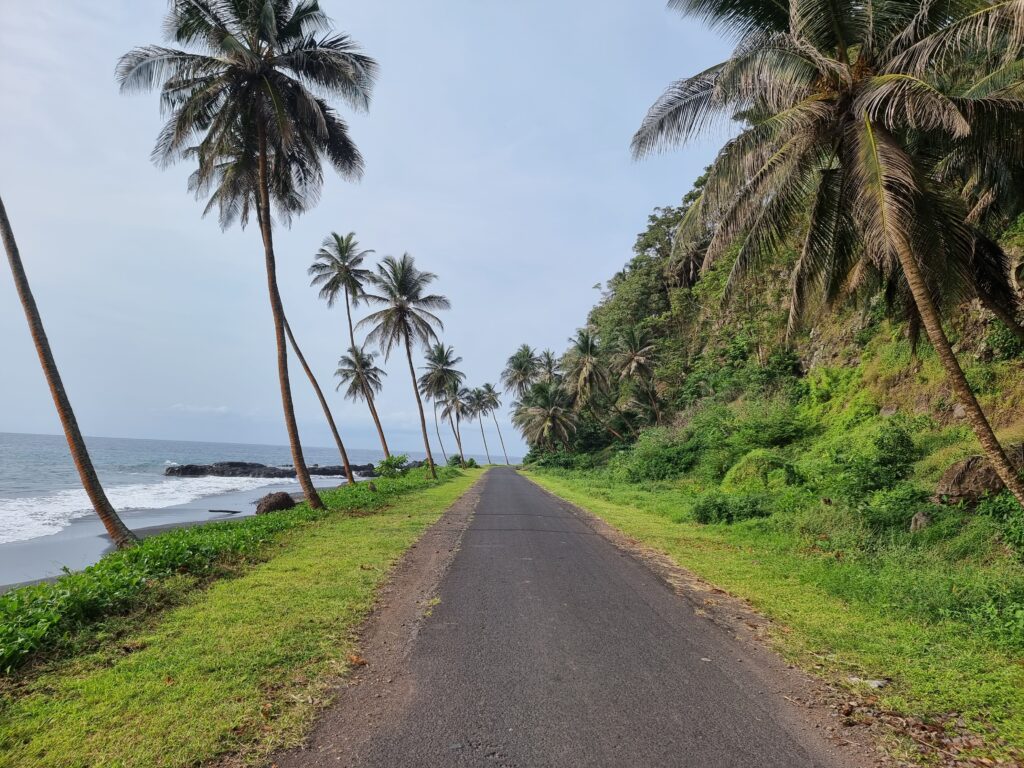
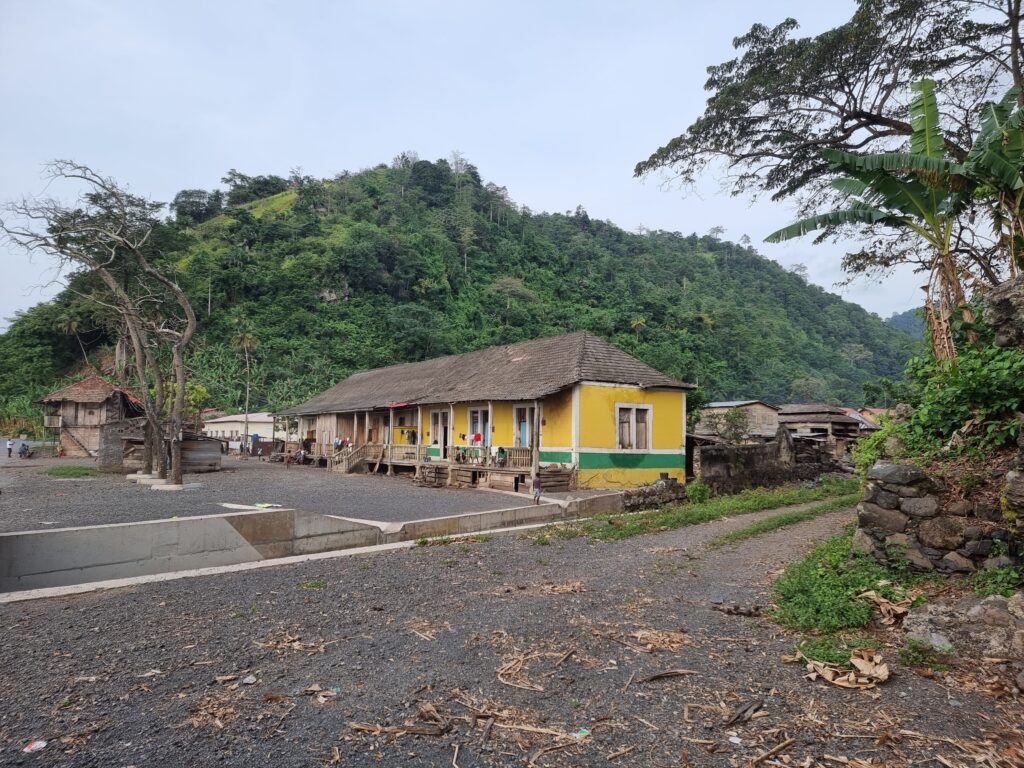
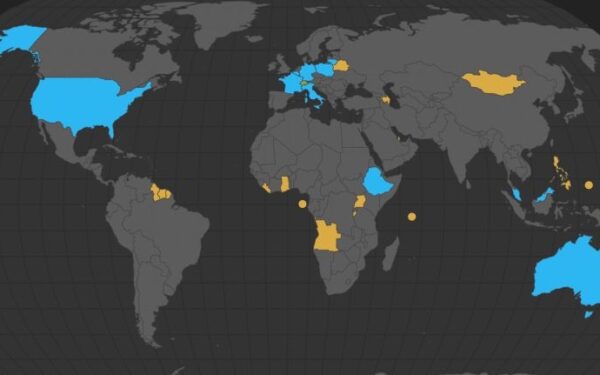
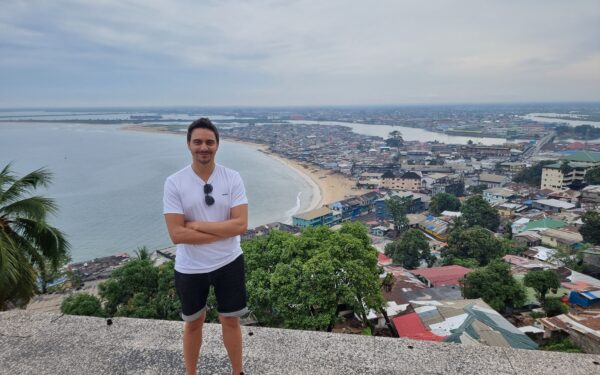
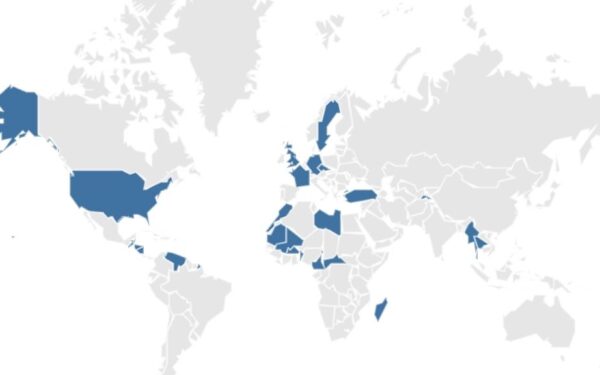
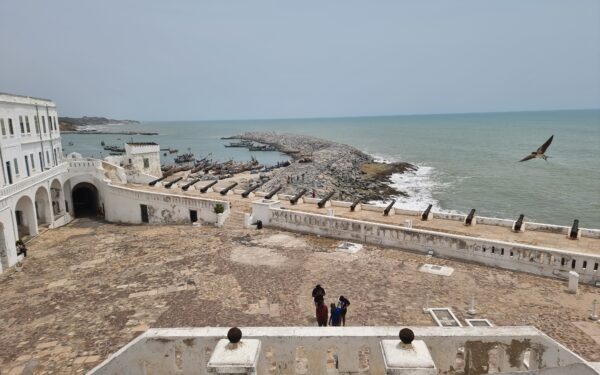
Nice write up. This is the first time I have actually commented on any blog, but I have sought out yours to say keep up the good work. Incidentally, I was in Sao Tome a day after you and caught the flight back via Lisbon and Accra just last Sunday, so stayed three days in all.
I agree with your write-up that Sao Tome is a gem. It definitely exceeded my expectations as well. And it is quite something seeing people with not much(in terms of material goods) live a simple, relatively happy life. The adults and kids playing on the beach without the trappings of modern technology was a joy to watch.
I am on country number 124 so far (with another 9 planned this year), and will definitely have this blog on as a favourite to see how you’re doing. Also you’re generous with information and have a good, engaging writing style. Thanks.